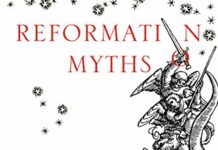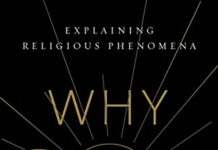
Ebook Info
- Published: 2009
- Number of pages: 288 pages
- Format: PDF
- File Size: 5.19 MB
- Authors: Rodney Stark
Description
How did the preaching of a peasant carpenter from Galilee spark a movement that would grow to include over two billion followers? Who listened to this “good news,” and who ignored it? Where did Christianity spread, and how? Based on quantitative data and the latest scholarship, preeminent scholar and journalist Rodney Stark presents new and startling information about the rise of the early church, overturning many prevailing views of how Christianity grew through time to become the largest religion in the world.Drawing on both archaeological and historical evidence, Stark is able to provide hard statistical evidence on the religious life of the Roman Empire to discover the following facts that set conventional history on its head:Contrary to fictions such as The Da Vinci Code and the claims of some prominent scholars, Gnosticism was not a more sophisticated, more authentic form of Christianity, but really an unsuccessful effort to paganize Christianity.Paul was called the apostle to the Gentiles, but mostly he converted Jews.Paganism was not rapidly stamped out by state repression following the vision and conversion of the Roman Emperor Constantine in 312 AD, but gradually disappeared as people abandoned the temples in response to the superior appeal of Christianity.The “oriental” faiths—such as those devoted to Isis, the Egyptian goddess of love and magic, and to Cybele, the fertility goddess of Asia Minor—actually prepared the way for the rapid spread of Christianity across the Roman Empire.Contrary to generations of historians, the Roman mystery cult of Mithraism posed no challenge to Christianity to become the new faith of the empire— it allowed no female members and attracted only soldiers.By analyzing concrete data, Stark is able to challenge the conventional wisdom about early Christianity offering the clearest picture ever of how this religion grew from its humble beginnings into the faith of more than one-third of the earth’s population.
User’s Reviews
Reviews from Amazon users which were colected at the time this book was published on the website:
⭐I am not surprised that book authors with personal agendas, cherry pick evidence and use spurious analysis to promote false narratives. Rodney Stark’s book is as much an object lesson in scholarship and analysis of evidence as it is a history of the growth of the early church. As Mr. Stark points out, Christianity is based on real history and real events and not myths. The speculations of some popular authors and teachers discredit Christianity. This book should be part of the required reading for a B.A. in History as an example of systematic collection and evaluation of evidence. We are today a society deluged with spurious statistics. We all need to know how to count and critically judge the numbers. The Bible says to test the spirits. We need also to test the numbers.
⭐I have enjoyed Rodney a Stark’s books in the past and looked forward to this one. However, instead of a treatise on how Christianity progressed in the 1st and 2nd centuries after Jesus, it was more an analysis of the different religions that existed at that time. Only about 1/4 actually dealt with what enabled the church to progress, and even that was more assertion that it was supported. Also, it was disappointing that he dismissed out of hand the report of thousands being saved in Acts 2, with no support, just his opinion that it couldn’t have happened. While helpful to understand the religious culture into which the church was born, it wasn’t helpful to understand how it grew.
⭐Mr. Stark is a professional historian who describes himself as a lapsed Lutheran. He seems to have taken as his professional mission the refutation of the Enlightenment’s misrepresentations about the classical, medieval, Renaissance and post-Renaissance culture of Europe. Since he is a brilliant and sagacious writer, his books are delightful to read as well as informative. If you think you know pre-modern, history, read Mr. Stark.
⭐Starks’ Cities of God satisfies for several reasons. 1) It is a case study in framing hypotheses and putting them to statistical tests. 2) It is clear and readable, with enough force to maintain interest past the technical details. 3) It shows why historians should count and quantify their material. 4) It validates the testimony of the early church fathers who had to stake out the boundaries of what became Orthodox Christianity. 5) It exposes the tendentious thinking of those who wish to modify Christianity to fit modern society.Stark makes both friends and enemies in his approach because he states his views bluntly and forthrightly, but he backs his position with details drawn from the works to which he takes exception. His bibliography shows that he has done exhaustive research in the literature of the field. His contribution to the debate is his statistical analysis and findings.Like it or loathe it, Cities of God cannot be ignored.
⭐Rodney Stark writes well. On topics that can turn even talented writers boring, Stark’s books consistently arouse interest and curiosity. His books are smooth, easy to read, and avoids cumbersome language. As a result, it usually takes me about half the time to finish books by Stark compared to other books related to classical history. Cities of God is no exception.Stark begins by given descriptions of all the significant cities in the ancient Roman world. These descriptions alone are quite valuable and provide insight into the Roman world and day-to-day life within it. But his collection of cities is just the beginning, as Stark goes on to explain how they became Cities of God.The subtitled of the book is “The Real Story of How Christianity Became Urban Movement and Conquered Rome.” True enough, but another subtitle could be, “How to Use Statistics to Test Historical Propositions.” Stark is a big believer in the use of statistics and math to solve histories elusive problems. The extent to which he succeeds I will leave to readers and his peers statisticians. But the book is an interesting read just to see how such an approach to history could work. For my part, I thought some of Stark’s propositions, such as that cities closer to Jerusalem were Christianized sooner, that Hellenistic cities Christianized sooner than Roman ones, and that large cities Christianized sooner than smaller ones, were well established.I am less confident in his conclusions about certain mystery religions “paving the way” for monotheism. Even if the numbers reflect ancient reality, the conclusion does not seem to follow from the premise. However, Stark’s arguments about Gnosticism and related heresies being late and derivative are well taken.Stark also continues to advance two theories he mentioned in his The Rise of Christianity. First, he emphasizes relationships and the practical usefulness of a religion over its beliefs and dogma in explaining its spread. In Cities of God, he seems to give more importance to belief than before. This is a useful corrective, as belief often helps explain the emphasis on relationship and practical usefulness in a religion. Second, Stark believes that the Gentile mission was not all that successful at first and that most early Christians were Jewish Diaspora converts. He gives more evidence for his theory here, but anyone looking to test the theory will still have to look elsewhere for fuller discussions.All told, Stark makes some good arguments, fails to prove others but raises good questions in the process, and leaves the reader with more knowledge and insight than when he or she started.
⭐This book is a great piece on church history. Rodney Starr, the author did a great job of explaining how the faith expanded. He uses statistics to accent his points. I also liked how he interjected some pieces of current day events to also back up the point.I agree with his conclusions about the growth of the church. I don’t think there is anything to foreign with his points. The way he explained the church really causes one to take a second look at the works of Paul. I think some view Paul as a catalyst. This book shows how Paul was following a trend. His point of the church growing through friends of relatives telling others is really interesting. People think growth comes from a Billy Graham. That helps but his book shows the growth comes from personal evangelism.I do think anyone serious about church history should read this book. He gives a wealth of information about the world which early church founders operated in. This helps us, in today’s world better understand the events of the early church.
⭐Everything arrived on time and as advertised
⭐This is a very readable book on the history of early Christianity particularly interesting because the author approaches the subject as a sociologist. His numerical analysis of facts is very enlightening and more useful than the historical opinions one very often receives. The book is well worth close study.
⭐Although I admire Rodney Stark’s rational choice theory of religion very much I was tempted to throw this book across the room more than once. His statistical analysis of correlations between the spread of early Christianity and the Jewish diaspora, the Isis cult, and other factors was very interesting. But his contempt for academic history (indicating a glaring ignorance of history), his snark at the various non-Christian movements he mentions, his ethnocntrism and Eurocentrism, his overt and blatant monotheistic bias (tell me, Mr. Stark, if “monotheism is the inevitable choice of rational people, given the option” why India, after two thousand years of Christian missionizing is still happy with polytheism? ). Don’t waste your money on this one.
Keywords
Free Download Cities of God: The Real Story of How Christianity Became an Urban Movement and Conquered Rome in PDF format
Cities of God: The Real Story of How Christianity Became an Urban Movement and Conquered Rome PDF Free Download
Download Cities of God: The Real Story of How Christianity Became an Urban Movement and Conquered Rome 2009 PDF Free
Cities of God: The Real Story of How Christianity Became an Urban Movement and Conquered Rome 2009 PDF Free Download
Download Cities of God: The Real Story of How Christianity Became an Urban Movement and Conquered Rome PDF
Free Download Ebook Cities of God: The Real Story of How Christianity Became an Urban Movement and Conquered Rome




